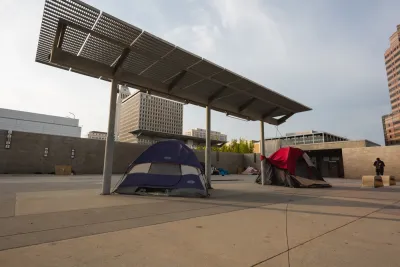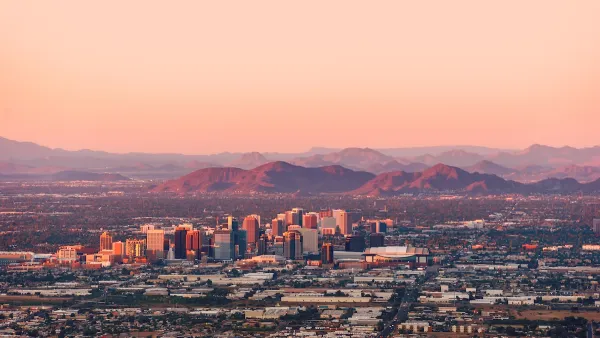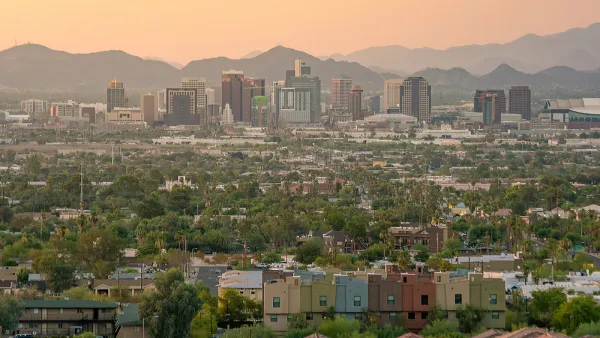Extreme heat events like the ‘heat dome’ that baked Southern California last summer kill a disproportionate number of people experiencing homelessness, who have fewer resources to protect themselves from the scorching sun.

Extreme heat waves are responsible for a growing number of deaths among unhoused people in Los Angeles, reports Summer Lin in the Los Angeles Times. “Although the unhoused population represents about 70,000 of Los Angeles County’s more than 9.8 million people, they accounted for nearly half — 5 in 12 — of deaths from heat illness or heat exposure last year, according to data from the coroner’s office.”
As Lin explains, “Heat-related illness and death are “notoriously” undercounted because patients in emergency rooms are frequently diagnosed with other medical conditions, such as dehydration and kidney failure, without any mention of their high temperatures and exposure to heat, according to David Eisenman, a professor specializing in climate change at the UCLA Fielding School of Public Health.”
Larry Kalkstein, the president of Applied Climatologists, estimates that up to 2,000 people die of heat-related causes every year, which would make heat deadlier than hurricanes, tornadoes, and snowstorms. This number will only rise as climate change causes longer and more severe heat waves, and unhoused people face some of the highest risks.
“More than a quarter of the lives lost during heat waves could have been saved if cities implemented measures to provide tree canopy, vegetation and reflective materials in roofing, sidewalks and other infrastructure, according to a March 2022 article co-written by [UCLA researcher Edith De Guzman].” In addition to these measures, cities can make more cooling centers available to all residents, so unhoused people don’t have to rely on private businesses that may be hostile to them.
FULL STORY: Heat waves are killing more L.A. homeless people

National Parks Layoffs Will Cause Communities to Lose Billions
Thousands of essential park workers were laid off this week, just before the busy spring break season.

Retro-silient?: America’s First “Eco-burb,” The Woodlands Turns 50
A master-planned community north of Houston offers lessons on green infrastructure and resilient design, but falls short of its founder’s lofty affordability and walkability goals.

Delivering for America Plan Will Downgrade Mail Service in at Least 49.5 Percent of Zip Codes
Republican and Democrat lawmakers criticize the plan for its disproportionate negative impact on rural communities.

Test News Post 1
This is a summary

Test News Headline 46
Test for the image on the front page.

Balancing Bombs and Butterflies: How the National Guard Protects a Rare Species
The National Guard at Fort Indiantown Gap uses GIS technology and land management strategies to balance military training with conservation efforts, ensuring the survival of the rare eastern regal fritillary butterfly.
Urban Design for Planners 1: Software Tools
This six-course series explores essential urban design concepts using open source software and equips planners with the tools they need to participate fully in the urban design process.
Planning for Universal Design
Learn the tools for implementing Universal Design in planning regulations.
EMC Planning Group, Inc.
Planetizen
Planetizen
Mpact (formerly Rail~Volution)
Great Falls Development Authority, Inc.
HUDs Office of Policy Development and Research
NYU Wagner Graduate School of Public Service





























